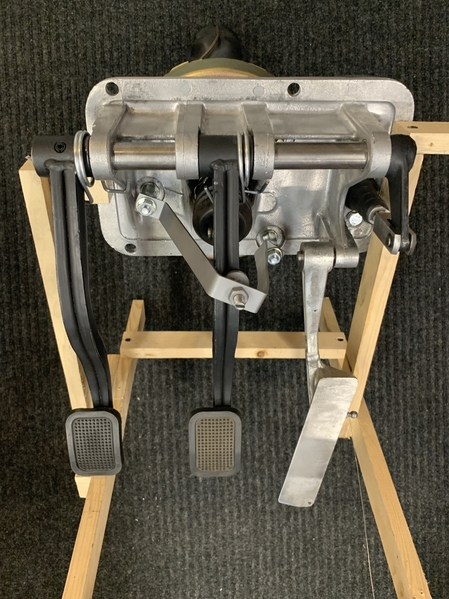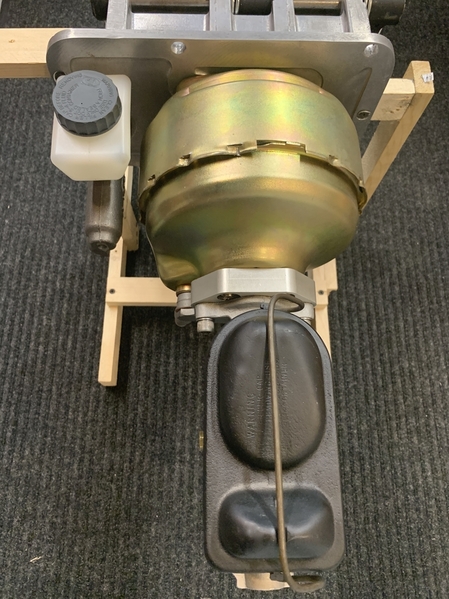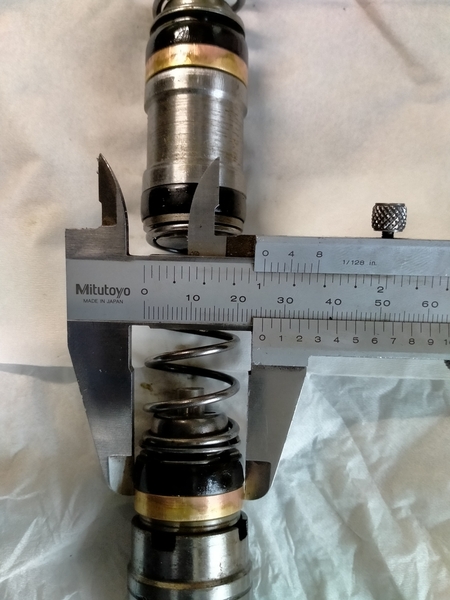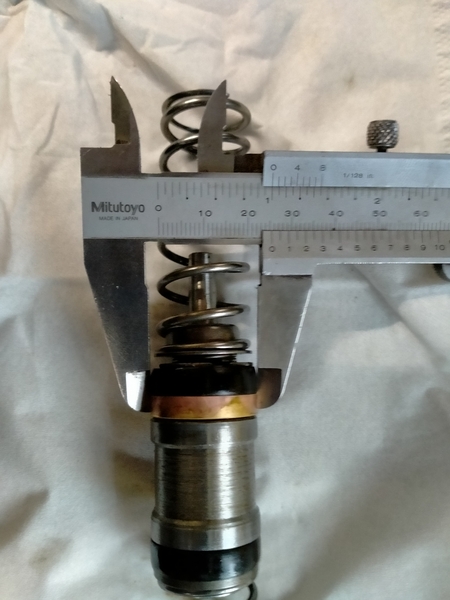Isn't at least the initial sizing of the master cylinder bore actually about maintaining a certain ratio of the master piston to the slaves?
On a stock Pantera there are four 1.685" (43mm) diameter rear pistons, and up front we have two more at 1.685" and two at 1.335" (34mm). If I did the math right, that comes to 16.18 square inches of slave pistons. Figuring the ratios by using the master piston diameters we've discussed, it comes out to a 18.49:1 ratio for the 7/8" (22mm), 17.26:1 for the 15/16" (24mm), 16.18:1 for the 1" and 14.38:1 for the 1 1/8".
So, before committing to a certain size master, probably best to know the piston areas of the calipers you will be using. If your total slave piston area rises to around 19.4 square inches, you may want that 1 1/8" master to maintain the stock pedal feel of a Pantera. Or am I way off course with this?
Generally speaking, no, the size of the pistons in the calipers is not in direct proportion to the size of the master.
In a vehicle of constant weight and brake pedal leverage, changing the bore of the master only effects the brake pedal effort.
Here, you are only considering three possible bore sizes, 7/8", 15/16" and 1" (and their metric equivalents).
7/8" bore will give you more pressure and tend to lock up the brakes. 1" will reduce the tendency of brake lock up at the expense of more pedal effort.
You do not reduce the pressure to the rear brakes by using a master with two different bores. You use the same bore for front and back and reduce the pressure to the rear with an inline pressure reducing valve, i.e., proportioning valve.
Sometimes (with Girlings) and currently with Brembos and some Wilwoods, the size of the pistons in the calipers are staggered just in order to fit the pistons into a "modular" caliper system.
The original Girlings in the Pantera fronts are two different sizes but we don't know the entire reason that the development engineer had.
It could simply be that they were looking for more even brake pad wear. When you alter the size of the caliper piston, you modify the pressure that the brake pad is receiving immediately under the piston.
The larger the piston, the greater surface area receiving pressure from the piston.
There, the larger the pad, the larger the piston area necessary.
Conversely, when you go to a larger surface area on the pad, the larger the piston that you need.
Because you are attempting to get predictable results it is better if you use the same size caliper pistons throughout. Changing that MAY alter the clamping force of the pads un-uniformly.
The size of the master bore in millimeters is LIKELY going to wind up at 24mm after extensive testing of other combinations.
In order to get BETTER braking on the Pantera, you need a larger diameter rotor, 12"od with 15" Campi's, a larger surface area brake pad, and a four piston Caliper with piston od's complimentary to those pads and rotors.
A pad formulation of something equivalent to a Porterfield R4S will also increase braking ability and reduce fade due to heat build up.
Vented, slotted and drilled rotors at this point also help reducing brake temps (documented by lab testing) 200F degrees.
Brake line sizes also come into play here. The stock Pantera lines are equivelent to a JIC -3 size. If you enlarge the system to a -4 (1/4"SAE) you are increasing the volume to the calipers but are reducing the pressure to them.
For a street car, leave the size of the lines alone at a -3 and leave the rear brakes alone, with the possible exception of going to a vented rotor LIKE the '65 Mustang rotor.
The rear doesn't need more braking (generally speaking) and you run the risk of not being able to balance the lockup front to rear.
Now if you are seriously going to race this car, then you probably aren't going to be restricted by the size of the braking system caused by 15" Campi's and you just need to do some very serious and expensive development work on the brakes.
I didn't do any testing of the original master cylinder with bigger front brakes but I suspect that you will be opening a can of worms with that if you change out the stock Girlings for a larger system.
If I were you, I'd talk to Chris over at SAAC Restorations and see what he recommends considering your "Belgian restrictions" of a translucent reservoir. Either that or move out of Belgium.
Other Pantera shops with EXTENSIVE big brake solutions are going to be Larry Stock at Pantera Parts, Mike Cook, formally of Hall Pantera (where you can find him, I can't) and Pantera Parts in Colorado. They likely will be similar to me in suggesting US solutions rather then the European ones that are out there too.
I'm sorry if I make this sound confusing but there are several interacting factors involved in modifying stock brakes on a Pantera and if you DON'T want to get killed, you NEED to know WTF you are doing with them. There are pitfalls all over the place and a novice is going to be blind to many.
One of the DESIRED features looked for in "bigger brakes" is REDUCING the tendency of locking them up. You WILL get that with a 1" bore and larger rotor/caliper/pad area solution.
One last consideration here though is in order to get more braking, you need more tire patch area and better grip, i.e., coefficient of friction to the rubber.
Remember the original front tire was a 185-78-15 and that contact patch was part of the brake selection consideration.
A dry race tire is going to be a completely different animal and a street car with fantastic brakes may be a "disaster" with race tires on it.
WHATEVER you do in Belgium DO NOT tell them that the brakes are not stock. What's the Italian expression? Morto bene? "Good and dead"?











